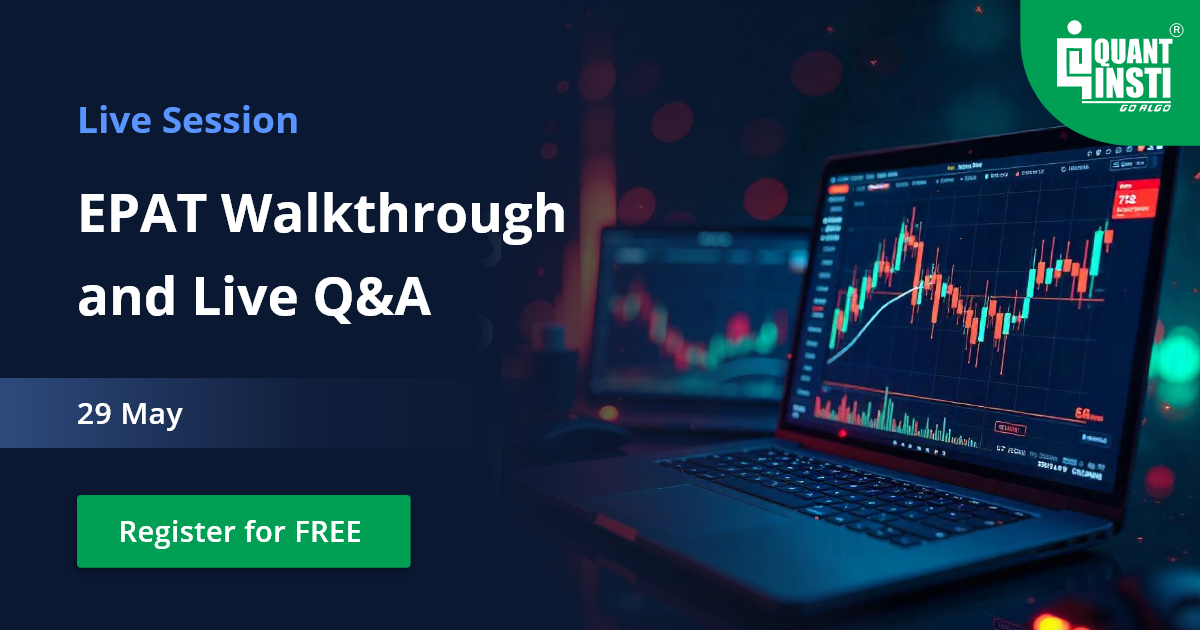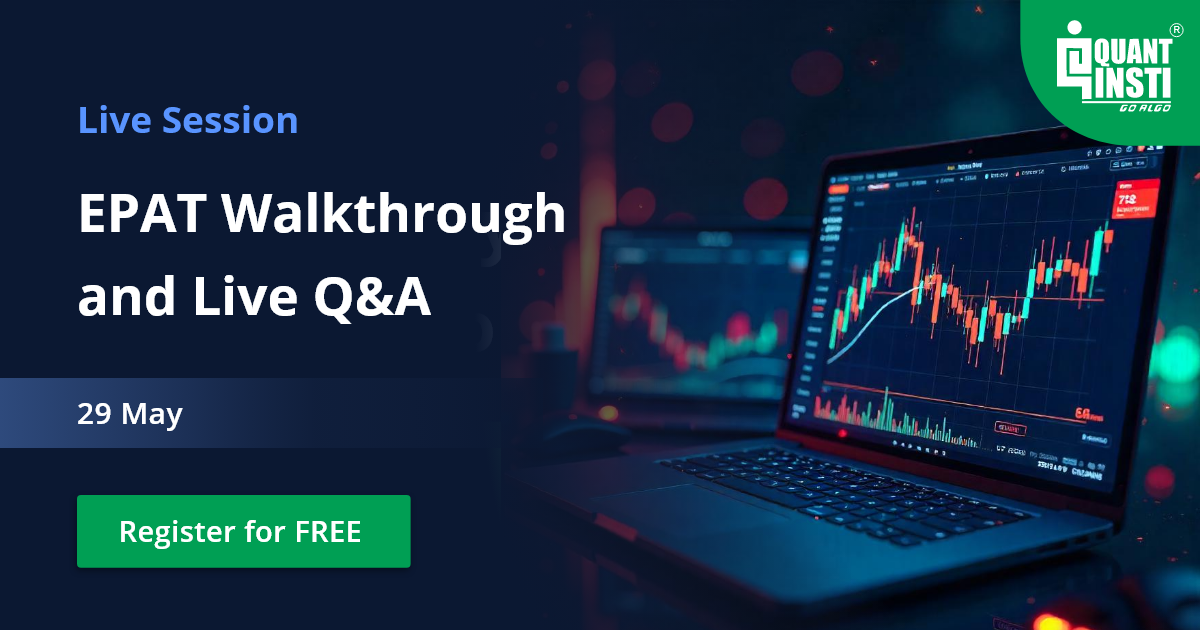By Aiman Mulla
With financial markets constantly evolving, traders and investors are seeking innovative ways to gain an edge. In recent years, Python has emerged as the programming language of choice, offering powerful tools and libraries to analyze market data, create advanced trading strategies, and make informed decisions.
According to a recent report by the Financial Times, Python continues to gain ground as the preferred programming language for quantitative analysis and algorithmic trading, with more financial institutions and hedge funds integrating it into their strategies.
This trend is indicative of the growing recognition that Python's versatility and ease of use make it an essential skill for traders and financial professionals.
According to a report by eFinancialCareers, Python has seen a remarkable surge in popularity, with a 25% year-over-year increase in job postings related to the language within the financial industry.
Python's versatility extends to the quantitative finance community, enabling the development of sophisticated statistical models and the implementation of machine learning algorithms for predictive financial strategies.
Whether you're interested in data visualization, technical analysis, or machine learning, Python has the solutions you need to succeed in the fast-paced world of finance. This collection of expert-written blogs on Python for Trading is to assist traders in harnessing the power of Python. This will enable you to leverage Python for a competitive advantage in the financial markets.
An Introduction to Python for Trading: Benefits, Strategies, and More
We often hear the burning question: "Which language should I learn for algorithmic trading?" There's no one-size-fits-all answer.
Lately, Python has gained favour in trading circles for several reasons. Its open-source nature and freely available packages for commercial use have contributed to its popularity. Python's extensive scientific libraries make it a user-friendly platform for constructing complex statistical models. This article offers an introductory look at Python's role in trading, exploring its applications in algorithmic trading. Additionally, it underscores Python's advantages within the finance sector and delves into the process of crafting and assessing trading strategies using this versatile language.
Popular Python Libraries for Algorithmic Trading
Python libraries are vital components of the programming language, offering pre-written code for various purposes. In algorithmic trading, Python libraries streamline tasks like data retrieval, collection, machine learning, backtesting, and much more. This article provides an overview of popular libraries, enhancing quantitative trading capabilities.
Installation of Ta-Lib in Python: A Complete Guide for all Platforms
Ta-Lib is a Python library for calculating technical indicators based on historical financial data, aiding in market analysis. Initially a hobby project by Mario Fortier, it has become popular for analyzing stocks and securities. Ta-Lib offers 150+ indicators, including ADX, MACD, and RSI. This blog simplifies Ta-Lib installation, facilitating strategy creation and backtesting on various platforms.
Stock Market Data: Obtaining Data, Visualization & Analysis in Python
Are you interested in acquiring stock market data and performing historical data analysis in Python? You have come to the right place!
This article is your roadmap to navigating the financial world, with sections on acquiring data, delving into global markets, exploring S&P 500 tickers, handling intraday data, resampling, and mastering data visualization and analysis.
In this comprehensive guide, you'll learn how to effortlessly:
- Access historical stock data
- Visualize and assess stock performance
- Obtain essential data like fundamentals, futures, and options
Creating Heatmap Using Python Seaborn
In this exciting blog, we're diving into the world of data visualization with Seaborn, a Python package that's a game-changer for traders tracking markets. We'll explore how to create stunning heatmaps for financial analysis. This article covers understanding heatmaps, their vital roles in finance, and a step-by-step guide to crafting them in Python to display stock price changes and their correlations. Say goodbye to boring charts and hello to captivating, informative visuals with Seaborn!
Value at Risk (VaR) Calculation in Excel and Python
Value at Risk (VaR) is a crucial metric for investors, quantifying the maximum potential loss in a portfolio. This blog delves into VaR's significance, and its calculation in Excel and Python via the Historical and Variance-Covariance methods, offering comprehensive insights on the topic, and aiding investors in risk assessment.
Building Technical Indicators in Python
Technical indicators are mathematical tools that use price and volume data to predict price trends. Traders employ them to forecast future price levels. This blog explores creating technical indicators with Python, including moving averages, Bollinger Bands, Relative Strength Index, etc. You can learn all about in this course on technical indicators python.
Machine Learning Classification Strategy In Python
Machine learning is revolutionizing trading by harnessing various data sources like OHLC data, fundamentals, and even social media posts to build predictive models. These models offer signals for when to buy or sell assets, potentially boosting your trade. This blog outlines:
- A brief on machine learning
- How is machine learning being implemented in trading?
- What is a classification algorithm in machine learning?
- Types of classification algorithms
- Implementing classification in Python
Yahoo Finance Forex: How to Download Forex Price Data in Python
The web is a treasure trove of sources like Quandl Python API, Alpha Vantage, and brokers' APIs, but today, we're focusing on Yahoo Finance. We'll guide you through the know-how of fetching forex price data from Yahoo Finance, whether you need it by the day or down to the minute. The process includes installing the Yahoo Finance library, importing necessary libraries, fetching daily and minute frequency forex price data, plotting close prices, and working with two forex pairs. This resource aids algo traders in accessing forex data for investment strategies. The Yahoo Finance library also supports fetching Yahoo futures data, making it a versatile tool for traders seeking forex and futures insights.
How to Get Historical Market Data Through Python Stock API
Quant traders constantly seek to optimize trading strategies, relying on backtesting with historical data. Accessing such data is often challenging. This blog explores free and paid solutions for historical data retrieval using Python Stock API wrappers. It covers asset types (stocks, ETFs, FX, commodities, options, treasuries, and crypto) with examples and caveats.
Special Mentions
Gold Price Prediction: Step By Step Guide Using Python Machine Learning
In this blog, we analyse and aim to predict the future price of gold using machine learning regression, specifically linear regression. We'll utilise historical data from the Gold ETF (GLD) to create a model for forecasting gold prices. The steps involve data import, variable definition, data splitting, model creation, price prediction, cumulative return plotting, and applying the model for daily predictions.
Asset Beta and Market Beta in Python
In the stock market, "beta" measures a stock's volatility relative to the market. Beta is a crucial concept in finance and investment, especially when assessing the risk and return potential of individual assets or portfolios. Asset beta and market beta are two key components of the Capital Asset Pricing Model (CAPM), a widely used method for estimating the expected return of an asset based on its systematic risk. In this blog, we will explore what asset beta and market beta are, their significance in investment analysis, and how to calculate them using Python.
Download Cryptocurrency Data in Python by using Crypto Compare API
To download cryptocurrency data using the Cryptocompare API in Python, follow this blog for simple steps which is ideal for beginners in algorithmic trading and cryptocurrency. The guide covers reasons to use CryptoCompare, importing libraries, setting an API key, fetching tickers, downloading historical data, specifically Bitcoin hourly data, and plotting it.
Conclusion
In this era of data-driven decision-making and algorithmic trading, Python has emerged as a powerful ally for traders. The blogs we've highlighted provide a comprehensive roadmap for leveraging Python's capabilities, from data analysis and visualization to machine learning and backtesting.
In conclusion, the world of trading is evolving, and Python is at the forefront of this transformation. Whether you're interested in visualizing market trends, building technical indicators, or utilizing machine learning for classification strategies, there's a wealth of knowledge waiting for you in these blogs. Python for Trading is more than just a tool; it's a gateway to enhanced decision-making and strategic advantage in the fast-paced financial markets.
If you are curious about Python's history, understanding its nature, and exploring its wide range of applications, the Python Handbook is your trusted companion to kickstart your Python journey.
To start learning Python and code different types of trading strategies, you can check out the Python for Trading course. So, embark on this journey, sharpen your skills, and unlock the potential of Python for trading success.
Disclaimer: All data and information provided in this article are for informational purposes only. QuantInsti® makes no representations as to the accuracy, completeness, currentness, suitability, or validity of any information in this article and will not be liable for any errors, omissions, or delays in this information or any losses, injuries, or damages arising from its display or use. All information is provided on an as-is basis.


